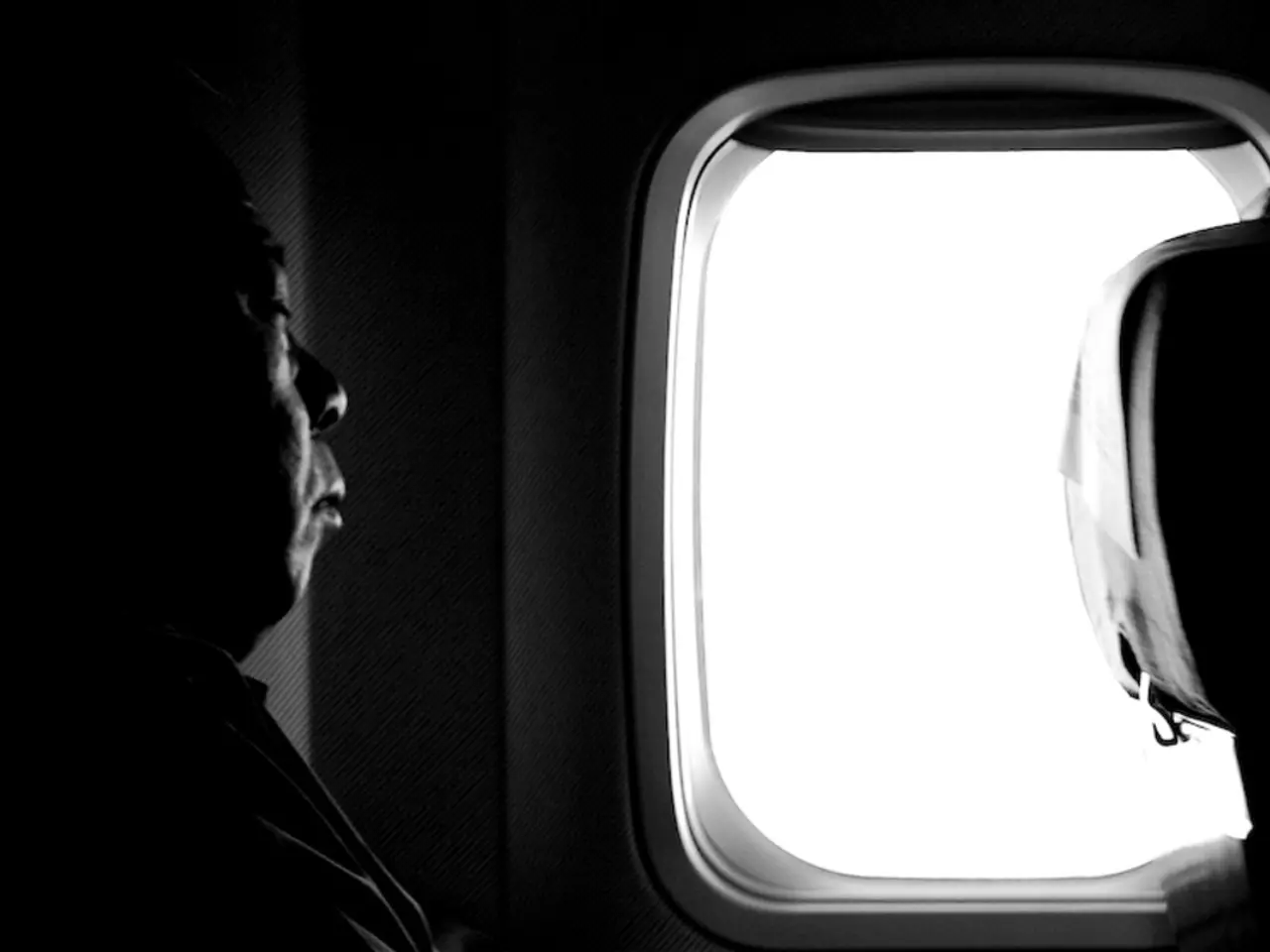Assessment of Seating Comfort Based on Facial Recognition Technology
=====================================================================================
In a groundbreaking study, researchers have discovered that facial expression recognition technology could revolutionise the development and evaluation of aircraft seats for comfort and emotional response.
The research, conducted by an Emotion Research Lab, involved 21 participants, 18 males and 3 females, who had their faces recorded while using two different aircraft seats and answering questions. The recordings were then analysed by the lab's facial recognition technology.
The analysis revealed that Seat 1 elicited more positive emotional responses from participants, such as activation, engagement, satisfaction, valence, relevance, and enjoyment. Furthermore, Seat 1 was rated significantly higher in emotional congruence with participants' answers compared to the other seat.
The study found that even subtle differences in seats could be perceived in participants' emotions, suggesting that this technology could be a valuable tool in the aviation industry for improving passenger experience.
The study's results could have implications for the design and development of aircraft seats, aiming to enhance passenger comfort and emotional well-being. The software used in the study captures facial micro expressions and calculates metrics such as activation, engagement, satisfaction, valence, relevance, and enjoyment.
The research underscores the importance of considering passengers' emotional responses in the design and development of aircraft seats. Facial expressions are universal across human cultures, making this technology a powerful tool for understanding user experience without relying solely on self-reports.
The findings of the study support the notion that using facial expressions recognition technology to compare comfort perception of aircraft seats is a promising approach. Parallels from related fields suggest its value: for example, Time-of-Flight (ToF) cameras combined with facial and posture monitoring have already enhanced passenger comfort and safety assessments in vehicle cabins by capturing detailed behavioral data and posture adjustments.
As the use of technology in evaluating passenger comfort in various settings continues to grow, this study contributes to the body of evidence supporting its value in the aviation industry. The research highlights the potential of using facial expressions recognition technology in the aviation industry for improving passenger experience, paving the way for a more comfortable and enjoyable flying experience for all.
- The study's software, which captures facial micro expressions and calculates metrics like engagement and satisfaction, could potentially be applied to other areas of health-and-wellness, such as fitness-and-exercise technology, to measure user enjoyment and effectiveness of workouts.
- Parallels can be drawn from the aviation industry's use of technology, like facial expressions recognition for enhancing passenger comfort, to the health-and-wellness sector, where the development of advanced tech could revolutionise sectors like science, ensuring better well-being for individuals through individualised diagnostics and fitness plans.




